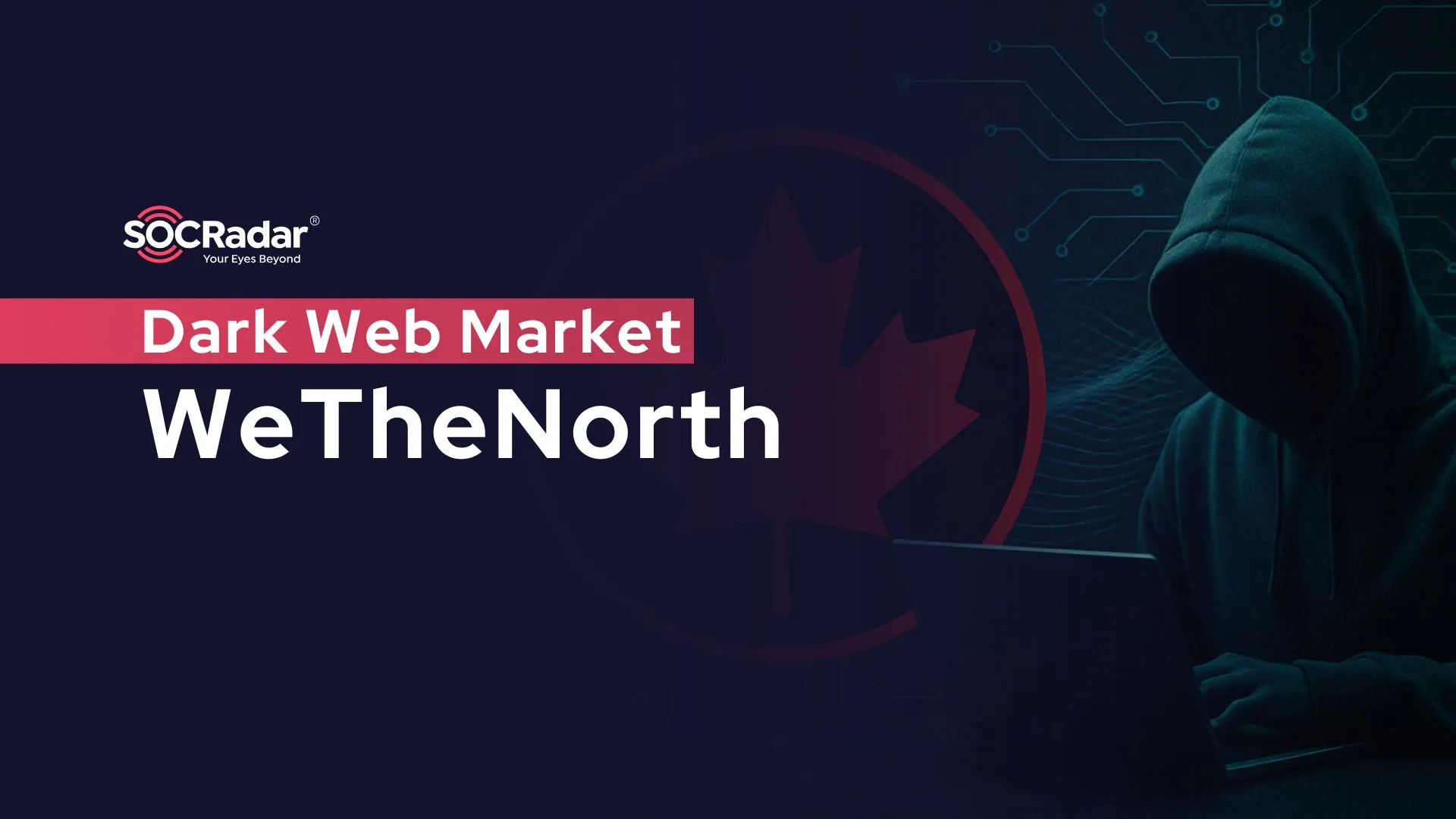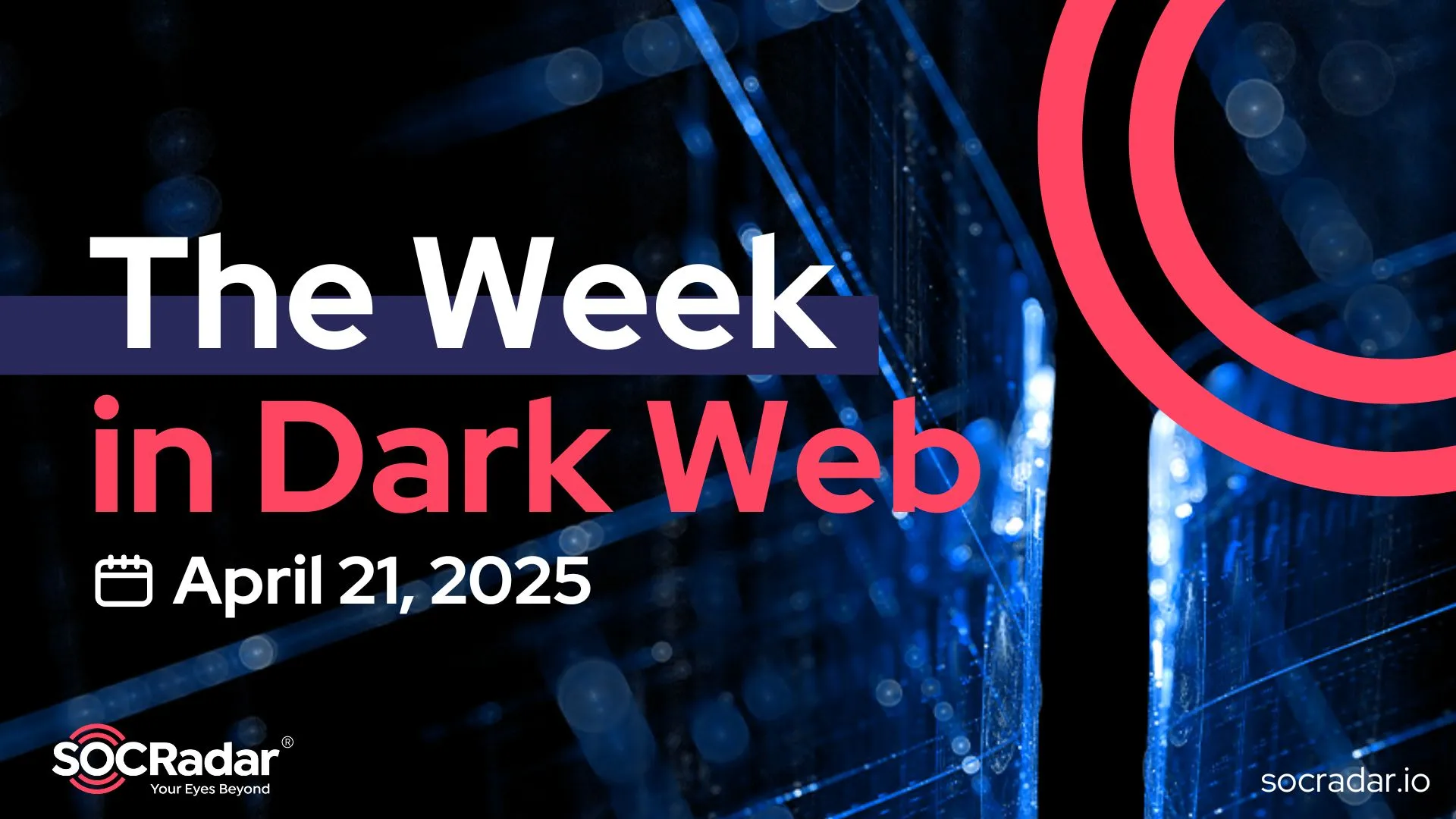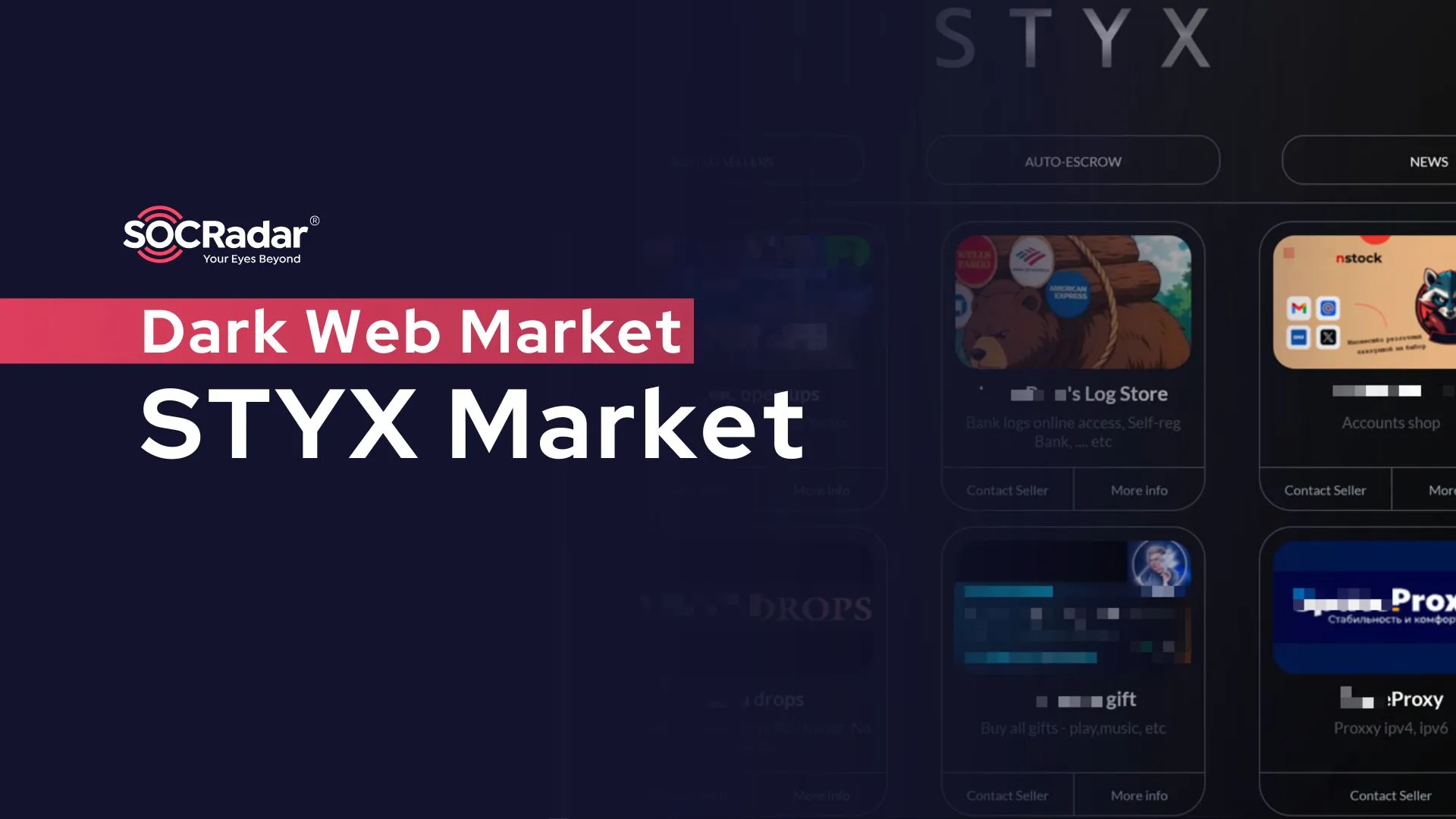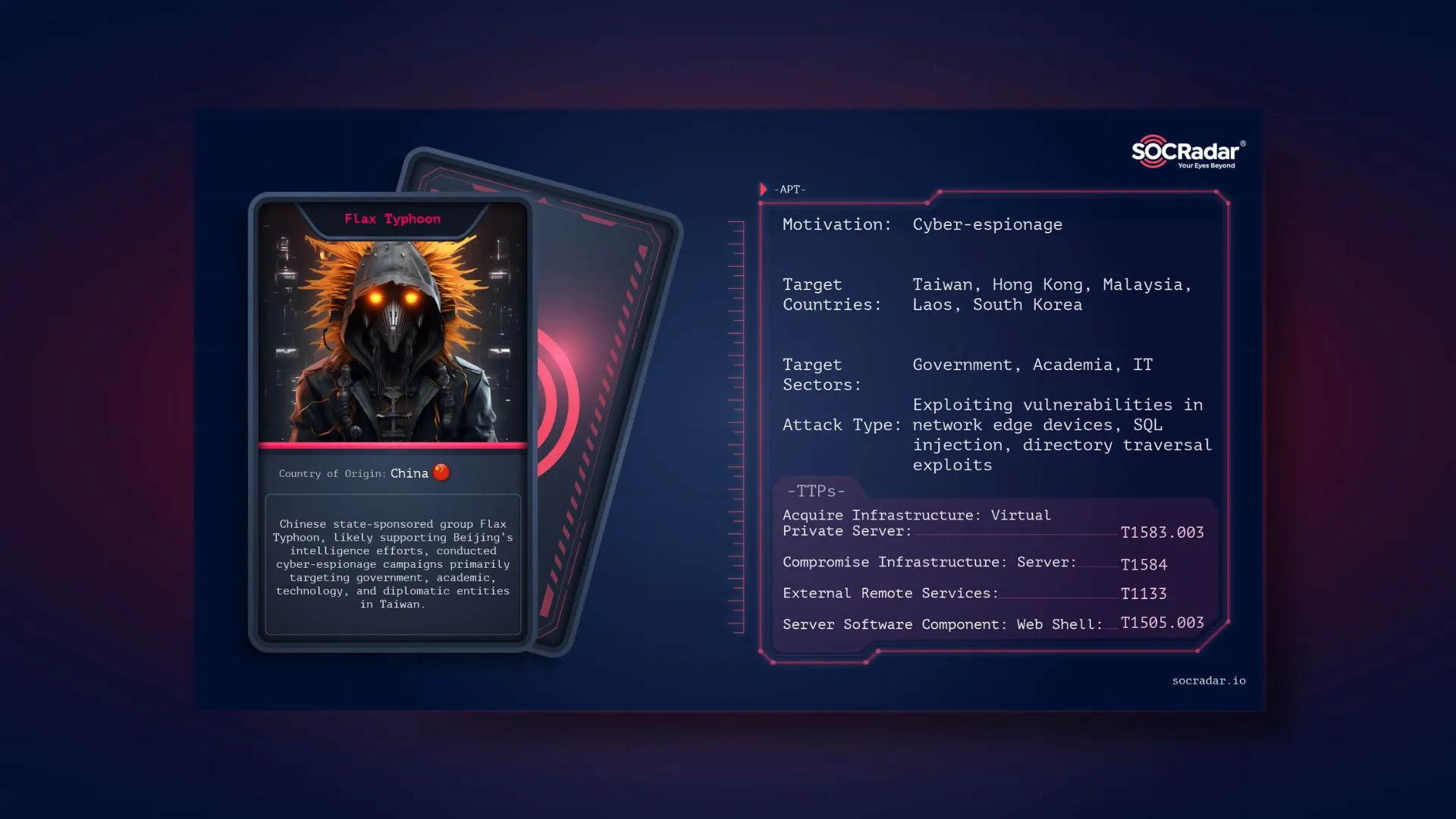Tracking Cybercriminals on the Dark Web: The Role of AI-Powered Threat Intelligence
The Dark Web has long been a hub for illicit activities. It serves as a marketplace for stolen data, malware, and hacking services, empowering cybercriminals to operate anonymously and evade detection. As cybercrime continues to escalate, the Dark Web has become a critical battleground in the fight against malicious actors.
Monitoring it is essential for tracking threat actors and anticipating potential attacks. However, the sheer volume of data, combined with the Dark Web’s anonymity and disorganized structure, makes monitoring a challenge. This is where AI-powered threat intelligence comes into play, helping cybersecurity professionals track these threats.
You can get a Free Dark Web Report for your organization now!
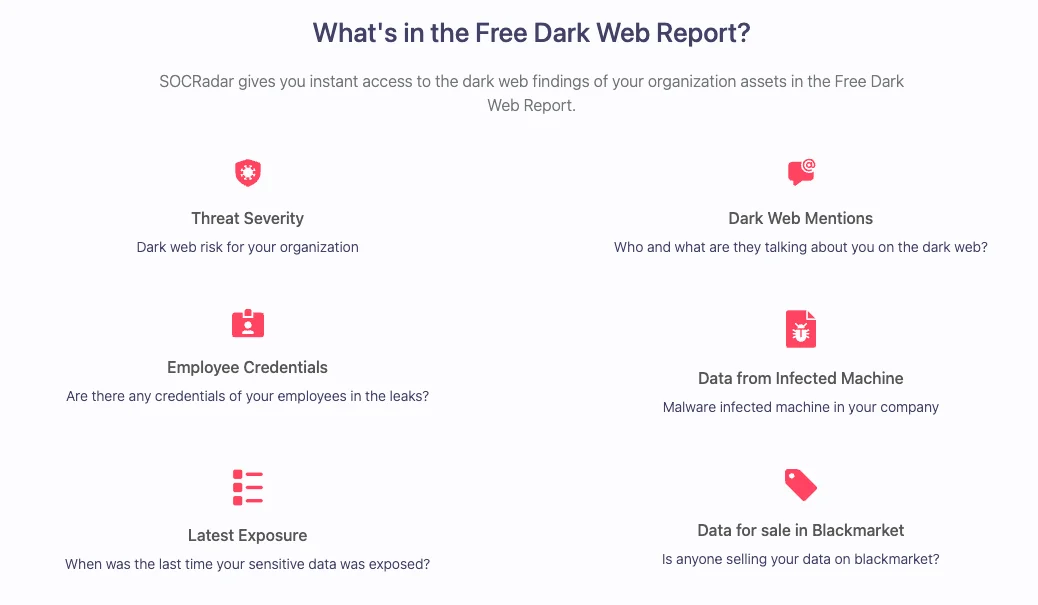
Check if your data was shared on Dark Web forums in 2024!
The Complexity of the Dark Web
Unlike the surface web, which is indexed by traditional search engines, the Dark Web operates in obscurity, creating an environment where anonymity is paramount. This nature provides a haven for both legitimate privacy-seekers and malicious actors alike.
The thriving underground economy it created various illicit activities flourish, including:
- Data Trading: The buying and selling of sensitive information such as credit card numbers, login credentials, and personal identification details.
- Malware Distribution: Cybercriminals exchange malicious software, ransomware, and exploit kits tailored to target specific vulnerabilities.
- Drug and Weapon Trafficking: Online marketplaces offer a wide array of illegal goods, from narcotics to firearms.
- Human Exploitation: Forums and marketplaces that engage in human trafficking, including the exploitation of individuals for forced labor or illicit content.
- Cybercrime Services: “As-a-service” offerings such as Distributed Denial of Service (DDoS) attacks, phishing kits, and custom malware development.
SOCRadar’s Advanced Dark Web Monitoring provides a comprehensive overview of potential risks in the Dark Web ecosystem. This feature offers real-time monitoring capabilities, tracking Personal Identifiable Information (PII) exposures, and identifying threat actors and malicious activities. The service aims to facilitate proactive decision-making, enabling organizations to mitigate risks before they escalate into severe security incidents.
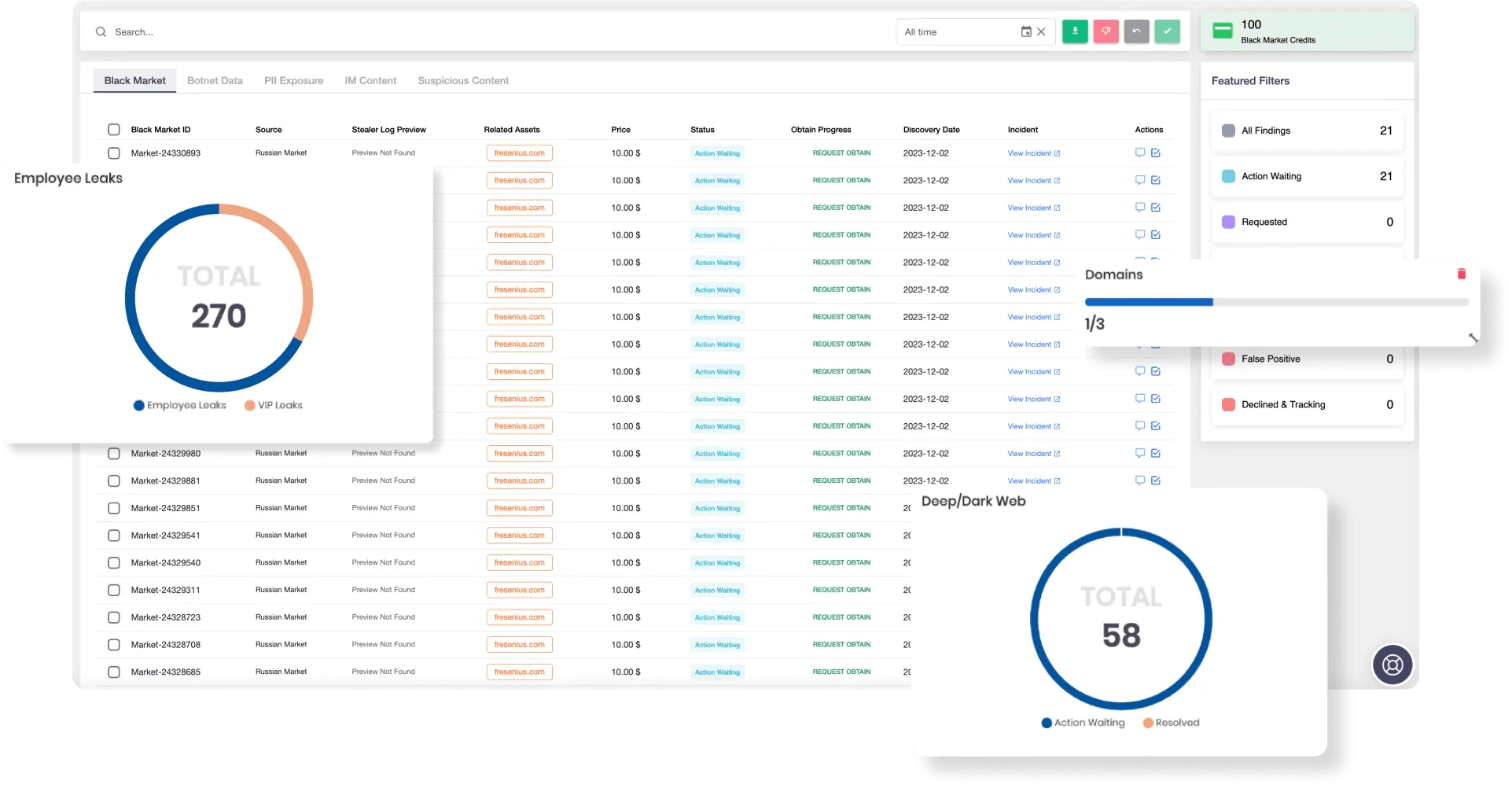
You can track Dark Web threats with SOCRadar Advanced Dark Web Monitoring module.
Despite the breadth of activity on the Dark Web, monitoring and investigating this hidden ecosystem pose significant challenges. Traditional methods of cyber threat intelligence often fall short due to the following reasons:
- Anonymity by Design: The anonymity makes it exceedingly difficult to trace individuals or transactions to their origins.
- Rapidly Evolving Ecosystem: Threat actors frequently change their tactics, communication platforms, and marketplaces to evade detection, rendering static investigative methods obsolete.
- Fragmentation: The sheer scale of Dark Web content, spread across countless hidden services, makes comprehensive monitoring a herculean task.
- Encryption and Authentication: Many Dark Web platforms employ various tactics to keep law enforcement or CTI analysts outside, further complicating investigations.
Given these challenges, traditional investigative approaches fail to keep pace with the Dark Web’s dynamic nature. As such, the integration of advanced technologies like AI and machine learning is not just beneficial but essential for effective Dark Web monitoring and threat intelligence.
AI in Dark Web Monitoring
Traditional methods of monitoring the Dark Web rely on labor-intensive processes involving analysts navigating forums, marketplaces, and chat groups. Even though there are tools for automating this process, it is still mostly manual.
AI tools change this approach by automating analysis of the collected data. AI tools can scan, index and create descriptions based on Dark Web content a lot faster than human teams, flagging potential threats in real time. These tools not only process text but also analyze multimedia content.
For example NLP can understand and interpret text in multiple languages, slang, and coded messages commonly used in Dark Web communications. This helps researchers track threats from various parts of the world. For example, discussions around “zero-day exploits” or “ransomware-as-a-service” might raise red flags.
How AI Identifies Cybercriminals
Unmasking cybercriminals on the Dark Web requires sophisticated techniques due to the anonymity tools and decentralized structure these actors rely on. AI-powered threat intelligence plays an important role by employing advanced methods to pierce through layers of obfuscation.
Keyword and Sentiment Analysis in Dark Web Forums
AI solutions enable researchers to analyze text from forums, marketplaces, and chatrooms, uncovering malicious intent or illegal activities across countless messages. Through natural language processing researchers can analyze the tone of the messages. Sentiment analysis gauges tone and intent, distinguishing between harmless chatter and serious threats. For instance, a post recruiting members for a ransomware attack might exhibit urgency and persuasive language that AI can flag.
In such use cases, the role of AI models or solutions is not to do all the work for the analyst but to generate additional data from existing data points, enabling analysts to pursue deeper insights.
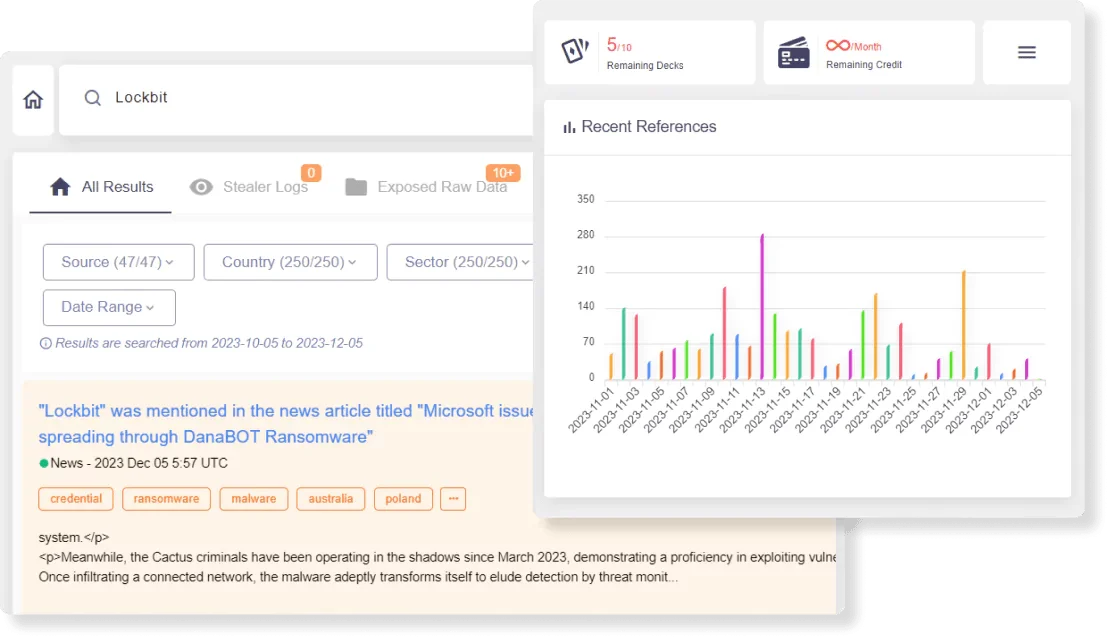
Discover if your company is mentioned on Dark Web forums with SOCRadar’s Advanced Dark Web Monitoring
AI-Driven Dark Web Investigation
Leveraging AI for Dark Web investigations has become a critical strategy for organizations to stay ahead of cybercriminals. AI technologies provide unparalleled efficiency and precision, enabling analysts to navigate the complexities of the Dark Web and extract actionable intelligence.
Real-Time Threat Detection and Alerts
AI-powered systems excel at monitoring the Dark Web in real time, identifying emerging threats as they surface. These tools can sift through vast volumes of Dark Web data, including forums, marketplaces, and private chats, to detect keywords, patterns, and anomalies indicative of malicious activity. By using natural language processing (NLP) and machine learning algorithms, these systems can differentiate between legitimate discussions and harmful intent, issuing timely alerts to cybersecurity teams.
Automating the Analysis of Intelligence
One of AI’s most significant contributions to Dark Web investigations is its ability to automate labor-intensive processes. Traditional methods required analysts to manually search and verify information, often taking days or weeks to compile reports. AI dramatically accelerates this process by autonomous analysis.
Conclusion
By harnessing the power of AI, organizations can transform Dark Web investigations into a proactive and effective component of their cybersecurity defenses, significantly reducing the risk posed by cybercriminals operating in the shadows. However, these efforts must be accompanied by a thoughtful approach to ethics and adaptability to maintain trust and efficacy.
To combat the challenges above, SOCRadar is leveraging artificial intelligence to customize threat intelligence for its clients. By understanding the unique characteristics of each organization—such as its sector, geographical location, and technological infrastructure—SOCRadar can deliver highly relevant and focused threat intelligence. This approach not only reduces irrelevant information but also significantly enhances the value of the intelligence provided.
To read more about how SOCRadar utilizes AI for threat intelligence, you can check our article about it.






























